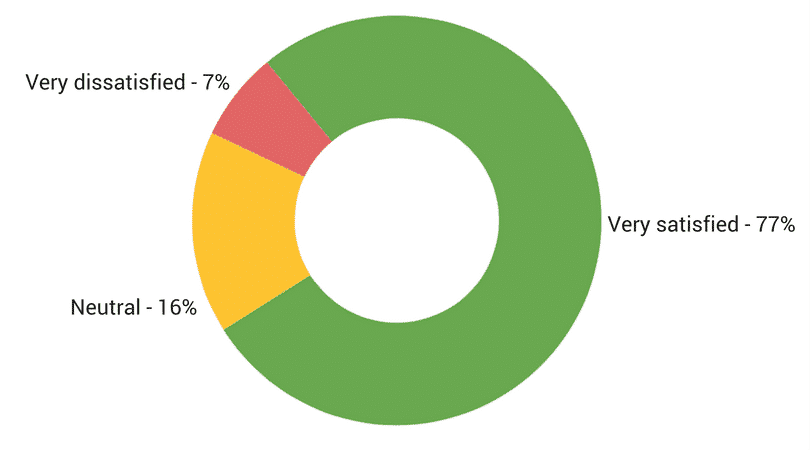A Key Factor for Well-Being of the Inter-American Division of Seventh-day Adventist Church
When you consider the word “relationship,” what comes to mind? For some, you might think of a close friend who means a lot to you. Others might initially think of romantic relationships and love. Still others might think of their personal relationship with God – the most important relationship in our lives!
At its heart, relationship is all about connection. When considering your relationship with the church in this light, the relationship is not formed with an entity, but is comprised of many connections made between church members.
Recently (2013), a global study was conducted in nine divisions of the Seventh-day Adventist Church. Research in the Inter-American Division was headed up by Raquel de Korniejczuk, PhD. at Montemorelos University. This research was conducted under the direction of the General Conference Office of Archives, Statistics, and Research, which provided the basic analysis plan and worked closely with the John Hancock Center for Youth and Family Ministry at La Sierra University, Riverside, California. This study was designed to assess the experiences and attitudes of church members regarding different aspects of the Seventh-day Adventist Church and church life.
Within the Inter-American Division, strong interpersonal connections and an overall comfort in relationships appear to be at the heart of members’ satisfaction with the church:
- Over four-fifths (83%) of respondents indicated that they felt they could “almost always” or “often” be themselves at church.
- Four out of five respondents indicated that they “almost always” or “often” feel as though their Sabbath School leaders and/or teachers know them well.
- Over three-fourths (76%) of respondents indicated that they feel their church leaders are “almost always” or “often” warm and friendly.
- Over three-fifths (65%) of respondents indicated that they feel their pastor “almost always” or “often” knows them well.
When asked about their overall satisfaction with the church they attend, over three-fourths (77%) of respondents indicated that they were “very satisfied.” Only 7% indicated that they were dissatisfied, while the remaining members (16%) considered themselves neutral.

It would seem that the overall satisfaction within the IAD has also lead to members being more involved with their local churches. When asked about their involvement at church, 43% of those surveyed reported that they consider themselves active participants, 23% consider themselves as casual participants, 19% consider themselves leaders in the church, and only 7% consider themselves as observers. How encouraging that a combined 62% of church members in the IAD consider themselves to be either leaders or active participants!
With these many positive results in mind, it may be helpful to note some insights that further data analysis reveals. The survey asked specifically, “What characteristics of church life would make you consider leaving your local SDA church to worship in another congregation of a different faith?” As noted above, by far the majority of respondents had no intention of leaving their congregations for a different faith. However, when offered several choices about what might lead them to leave, the analysis showed that particularly among the younger generations, one key to remaining in the Church centered on the strengths of their interpersonal relationships in the Church.
- Especially among the youngest respondents (15 years of age and younger), one condition under which they might consider leaving the church for another denomination would be if they perceived church they attended to be cold and unfriendly.
When asked about conditions under which they would prefer to attend another SDA church or worship at home researchers noted a similar pattern.
- Respondents under the age of 25 years of age were most likely to choose those options if they experienced their church as cold and unfriendly.
As respondents evaluated with church experience in general, it was also the younger generations that were least likely to report that their pastor knew them well. Whereas, older congregates reported a better connection with their pastor.
As you can see, relationships are key to keeping current members as a part of our church – particularly the young people within our congregations. For the IAD, this means continuing on in the direction in which they have been going; meaningful connections between people seems to be the “glue” that hold many people in the church and aid in youth retention.
When you consider your own congregation, Sabbath School, or small group, what areas do you perceive to be relationally strong? Are there areas for improvement? How can we – as Seventh-day Adventist church members – ensure that we are not seen as cold and unfriendly, but rather warm and welcoming to church members of all ages?
As we have seen in previous blogs, church members are “leaking out” at an alarming rate. The time has come to do all we can ensure a strong future for the Seventh-day Adventist Church, and ultimately, for the Kingdom!
To learn more, check out the full report: Inter-American Division Report
Creado en colaboración con el Instituto del Ministerio de la Iglesia (Institute of Church Ministry).
Published by ASTR

